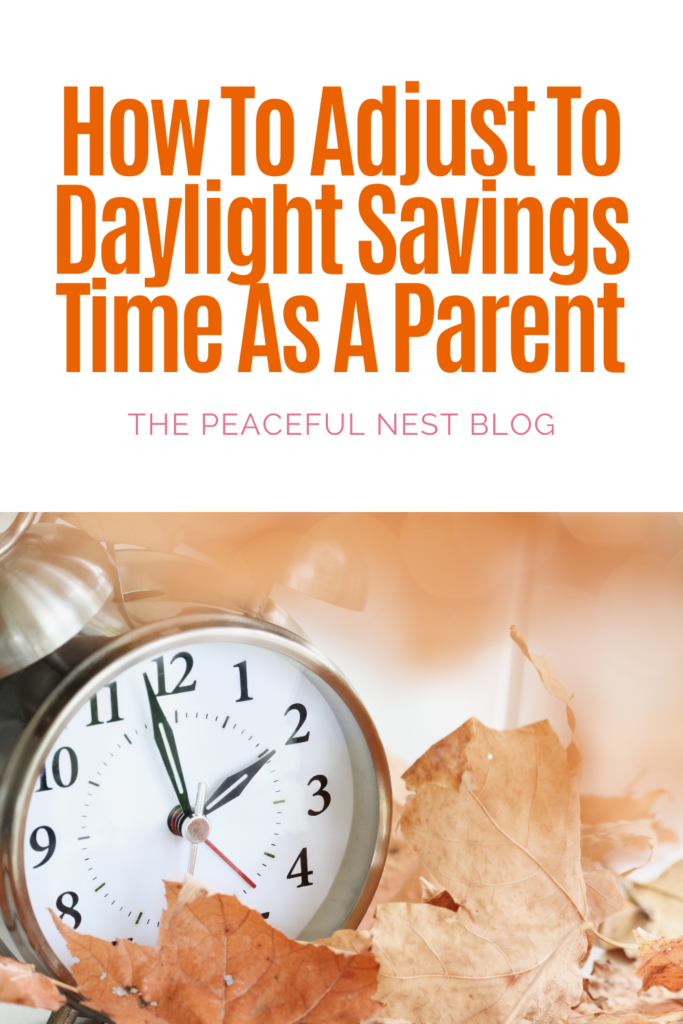
It’s that time of year again-time to adjust to Daylight Savings Time.
For most people, this transition is relatively easy. They lose an hour of sleep but get it back in the spring. But for parents, adjusting to Daylight Savings can be a little more complicated. So here are a few tips on adjusting as smoothly as possible for you and your kids.
What is Daylight Savings Time, and why do we have it
Daylight Savings Time (DST) is a time change that happens twice a year, in the spring and fall. It’s designed to save energy by making it lighter later in the day. DST has been around since the late 1800s, but there is still some debate about whether it saves energy.
There are a few drawbacks to DST, however.
One is that it can be disruptive to our sleep patterns. Our bodies are designed to wake up when it’s light out and sleep when it’s dark. So when DST happens, our bodies must adjust to the new schedule, which can be tough, especially for young children.
Another downside to DST is that it can cause problems with our routines. For example, if you usually take your child to school at 8:00 am, but daylight savings time starts, and it’s now 7:00 am, you’ll have to adjust your schedule. This can be tricky, especially if you have other children at home who are on a different schedule.
So how can you make the adjustment to DST as smooth as possible? Here are a few tips:
– Try to adjust your sleep schedule gradually in the days leading up to DST. This means going to bed and waking up 15 minutes earlier each day. Then, on the day of DST, you’ll be less likely to feel the effects of the time change.
– Get plenty of rest in the days leading up to DST. This will help your body adjust more quickly to the new schedule.
– Avoid caffeine and alcohol in the evening. These can make it harder to fall asleep, making it harder to wake up on time.
– Make sure your child’s bedroom is dark and quiet. This will help them sleep better and make waking up in the morning easier.
– Have a backup plan for childcare. For example, if you usually take your child to school, find out if there’s someone who can do it for you on the day of DST. This way, you won’t have to worry about getting up early.
– Be patient. It can take a few days for your body to adjust to the new schedule. So don’t get too stressed if things are a little off at first. Just go with the flow; eventually, everything will fall into place.
How to adjust to Daylight Savings Time as an adult
As an adult, losing an hour of sleep can be frustrating when Daylight Savings Time starts. But you can do a few things to make the adjustment easier. Here are a few tips:
– Try to adjust your sleep schedule gradually in the days leading up to DST. This means going to bed and waking up 15 minutes earlier each day. Then, on the day of DST, you’ll be less likely to feel the effects of the time change.
– Get plenty of rest in the days leading up to DST. This will help your body adjust more quickly to the new schedule.
– Avoid caffeine and alcohol in the evening. These can make it harder to fall asleep, making it harder to wake up on time.
– Make sure your bedroom is dark and quiet. This will help you sleep better and make waking up in the morning easier.
– Have a backup plan for childcare. If you have young children, find out if there’s someone who can take care of them for you on the day of DST. This way, you won’t have to worry about getting up early yourself.
– Be patient. It can take a few days for your body to adjust to the new schedule. So don’t get too stressed if things are a little off at first. Just go with the flow; eventually, everything will fall into place.
How to adjust to Daylight Savings Time as a child
When daylight savings time starts, it can be confusing why the days are suddenly shorter. So here are a few tips on how to get through the end of Daylight Savings Day and beyond with your sanity intact.
– Talk to your parents about what’s happening. Knowing why the days are getting shorter and what that means for your schedule can be helpful.
– Try to stick to your routine as much as possible. This will help your body adjust more quickly to the new schedule.
– Avoid caffeine and sugar in the evening. These can make it harder to fall asleep, making it harder to wake up on time.
– Make sure your bedroom is dark and quiet. This will help you sleep better and make waking up in the morning easier.
– Be patient. It can take a few days for your body to adjust to the new schedule. So don’t get too stressed if things are a little off at first. Just go with the flow; eventually, everything will fall into place.
The history of Daylight Savings Time
Daylight Saving Time (DST) is the practice of advancing clocks one hour during the summer months so that more daylight is available in the evening. DST was first introduced in the United States in 1918 to conserve energy during World War I. However, it wasn’t officially recognized until 1966, when the Uniform Time Act was passed.
DST is observed in most of the United States from the second Sunday in March to the first Sunday in November. During DST, clocks are turned one hour ahead at 2:00 am local time. This means that if it’s currently 1:00 am, it will become 2:00 am when DST begins.
The purpose of DST is to make better use of daylight. By advancing clocks, people have more daylight in the evening, when they are most likely to be outside and active. This also reduces the need for artificial lighting, which can save energy.
DST is not observed in all parts of the United States. For example, Hawaii and most of Arizona do not observe DST because the climate is such that there is little need for artificial lighting year-round. In addition, some Native American tribes have their time zones, which may or may not follow DST.
DST can be difficult to adjust to, especially for young children.
It’s important to be patient and understanding as everyone adjusts to the new schedule. With time and patience, everyone will be back on track.
Daylight Savings Time can be difficult for both parents and children. For adults, it can be frustrating to lose an hour of sleep, and for kids, it can be confusing why the days are suddenly shorter. But it is possible to get through with a little bit of patience!
Be sure to read my top posts on parenting:
- Why Consistent Parenting Matters
- 12 Habits of Immensely Peaceful Moms
- 63 Mom Hacks That Are Pure Genius
- Connect With Your Child and Build Up Their Heart
Are you looking for ways to become a peaceful mom but aren’t sure how?
I created a free planner for moms like me, who want to create a peaceful home but let the stress of never having it all together defeat them, because whoever has it together? The best we can do is a plan for peace and roll with the punches, right? If you want your free planner you can get it here!
Are you looking for a mommy tribe?
Our Facebook group, From Chaos to Calm, is full of encouraging and supportive moms like you. We would love to have you join us! Join From Chaos to Calm Mom group on Facebook.
Want more fun activities? Follow me on Instagram and Facebook! Also, don’t forget to share this post on Pinterest!

Hi there, I’m Jenna! I am a devoted mommy and wife. As well as an advocate for children and creating a peaceful atmosphere for those we love. I co-wrote Faith Actually: Living Life After Tragedy with my husband. I have my Bachelor’s Degree in Biblical Studies and currently working toward my Master’s in Positive Psychology. My number one desire is to create a peaceful home life for my family. My second desire is to share with you the tips I learn along the way!


